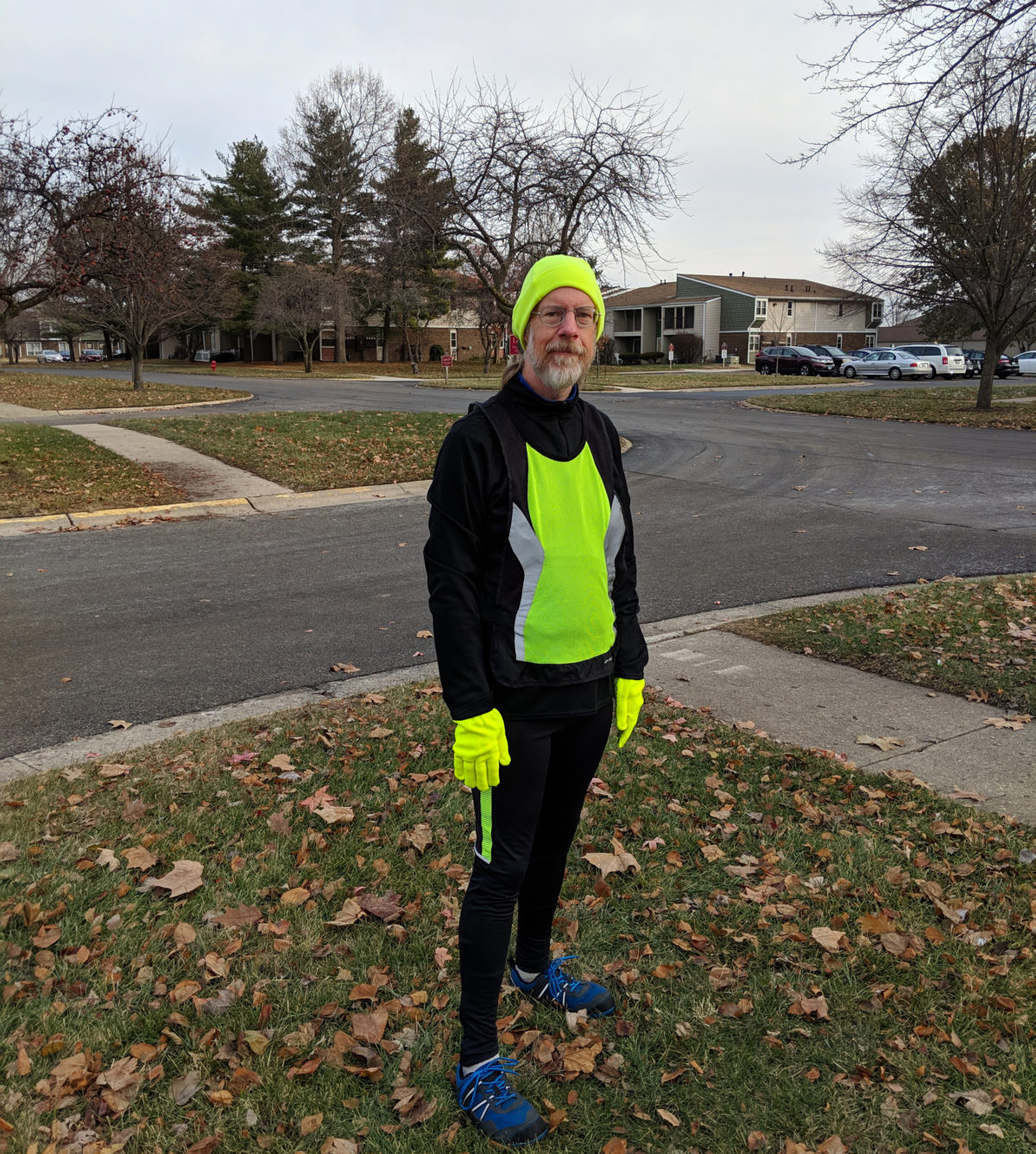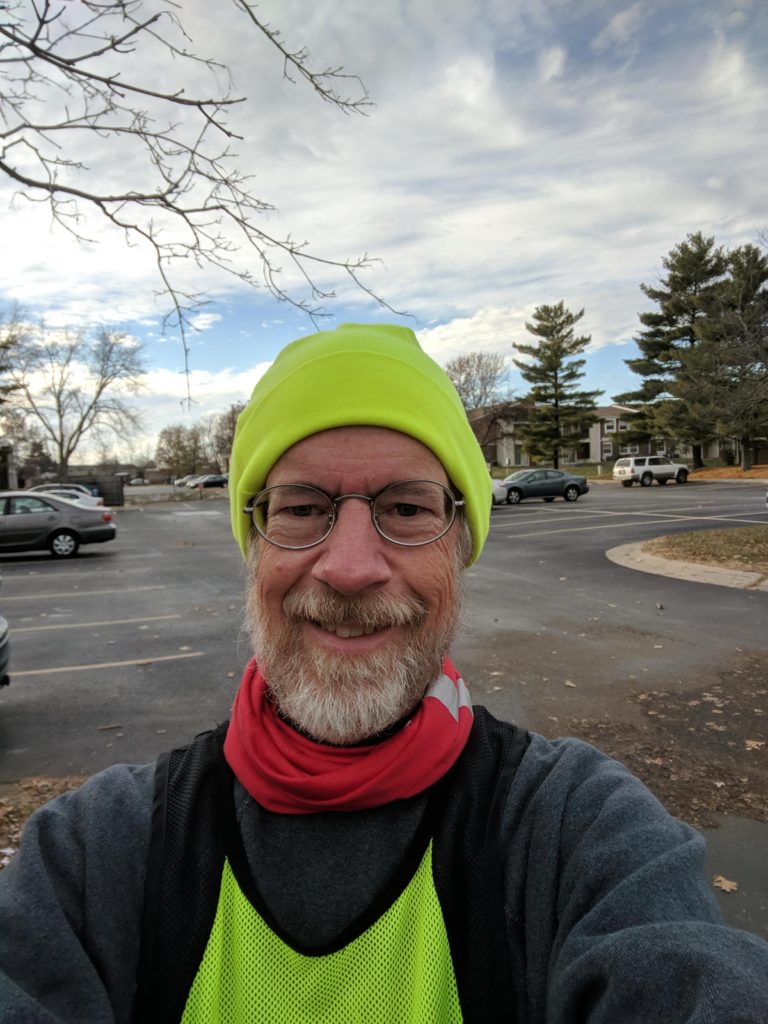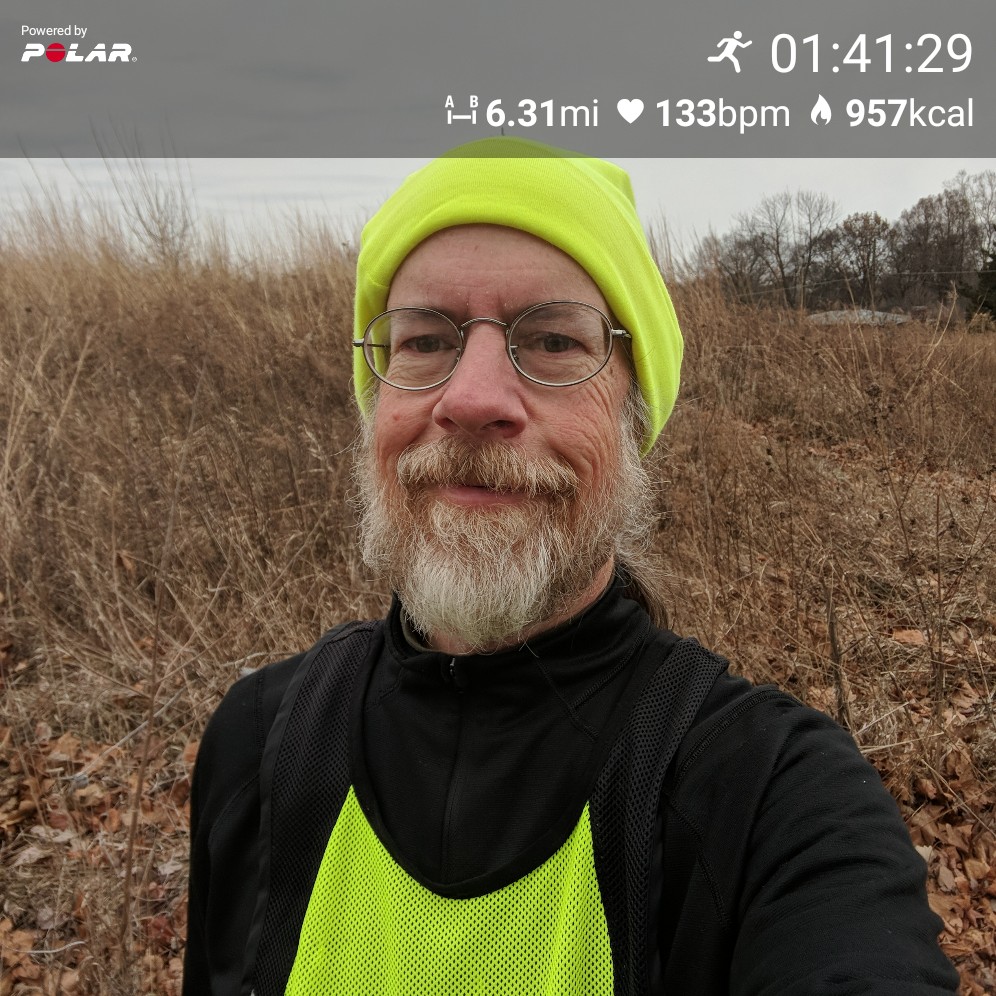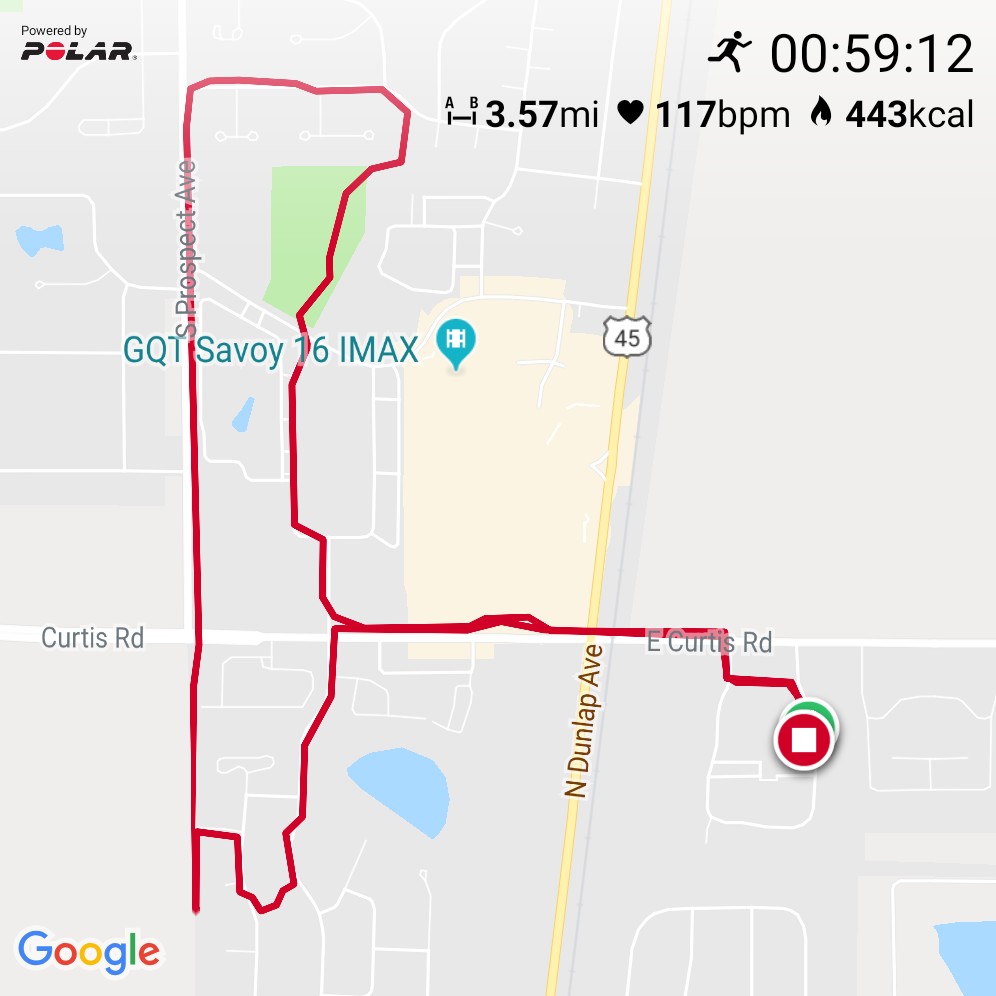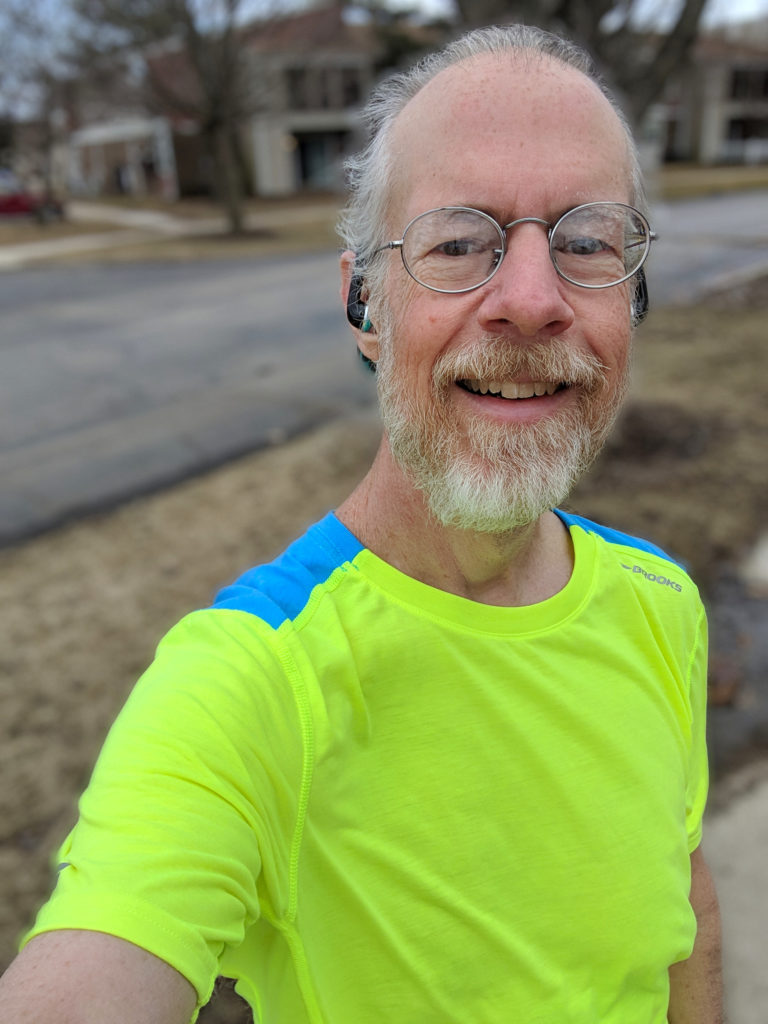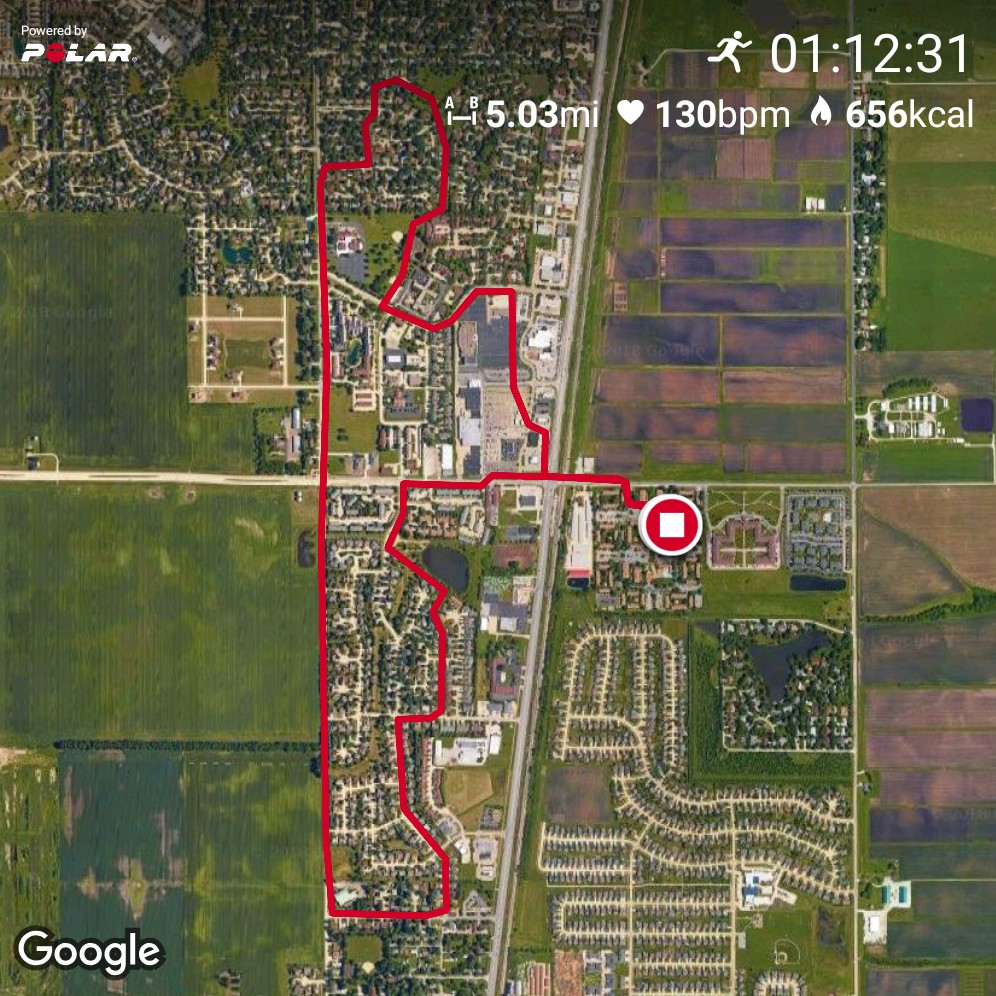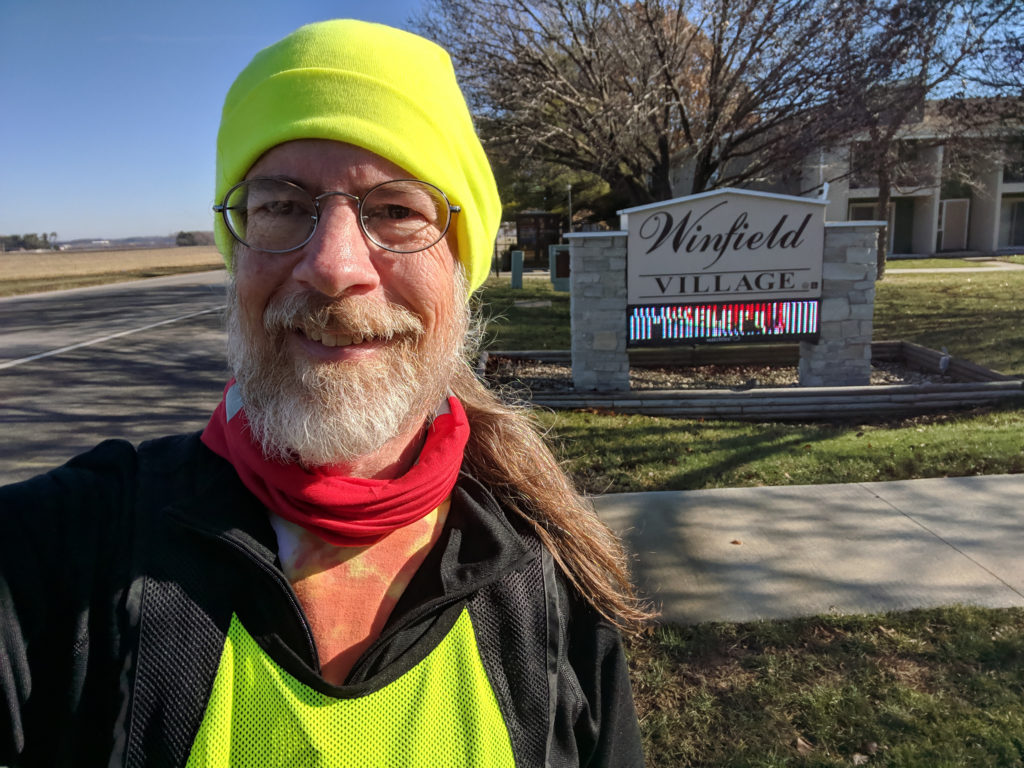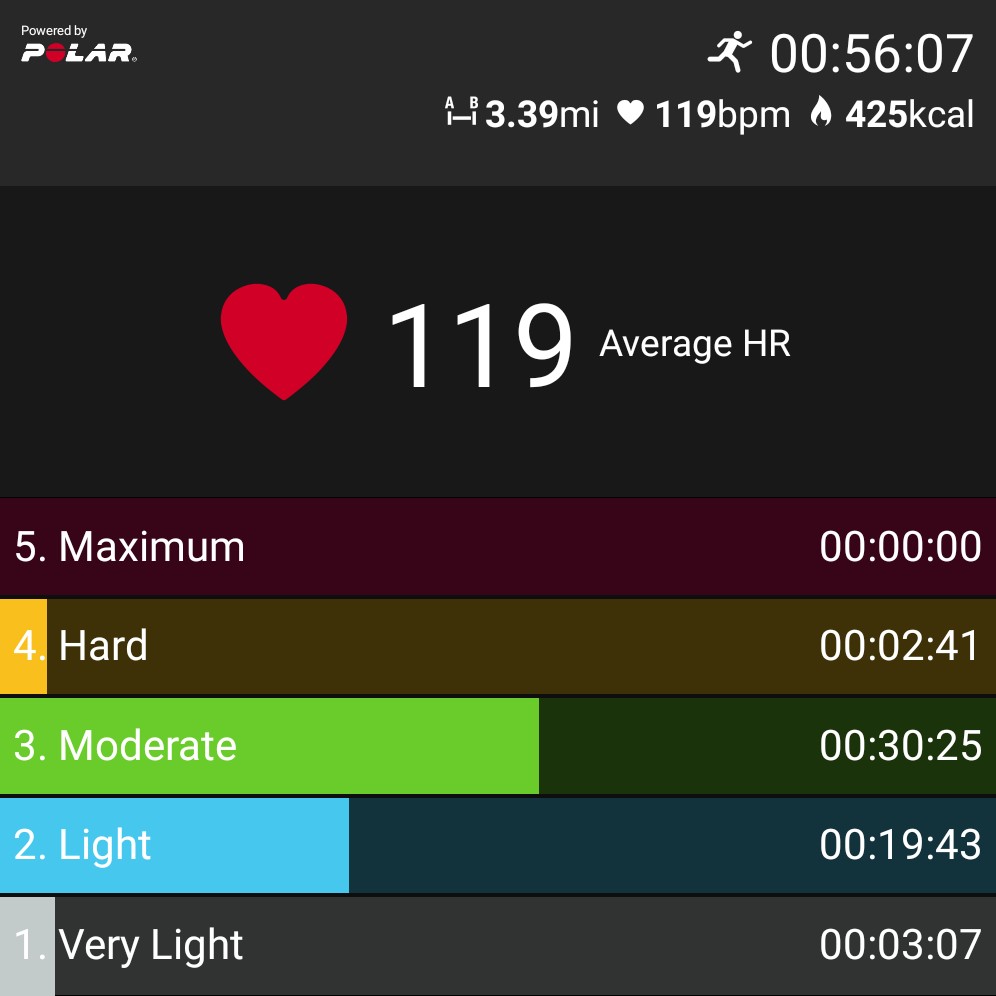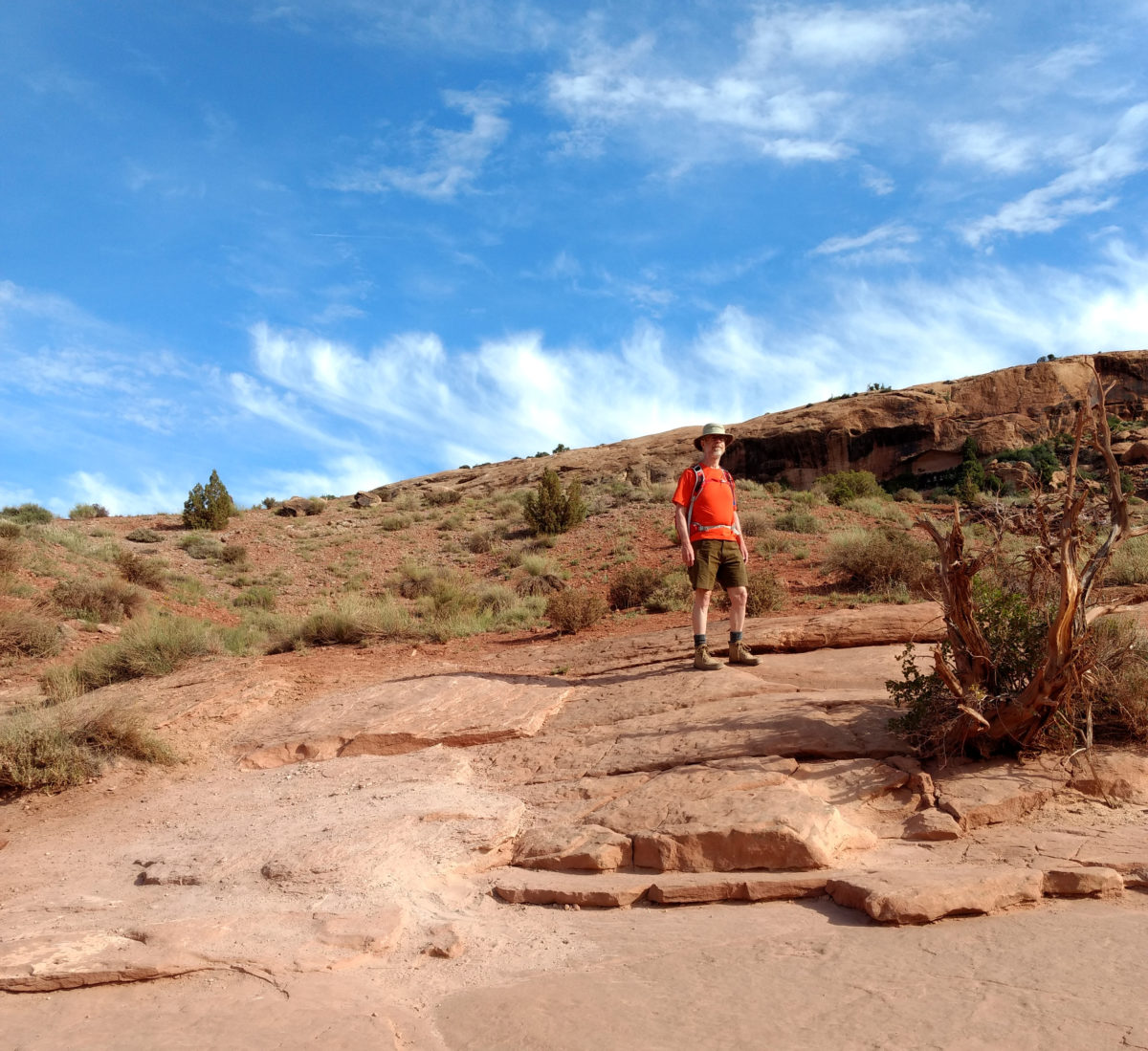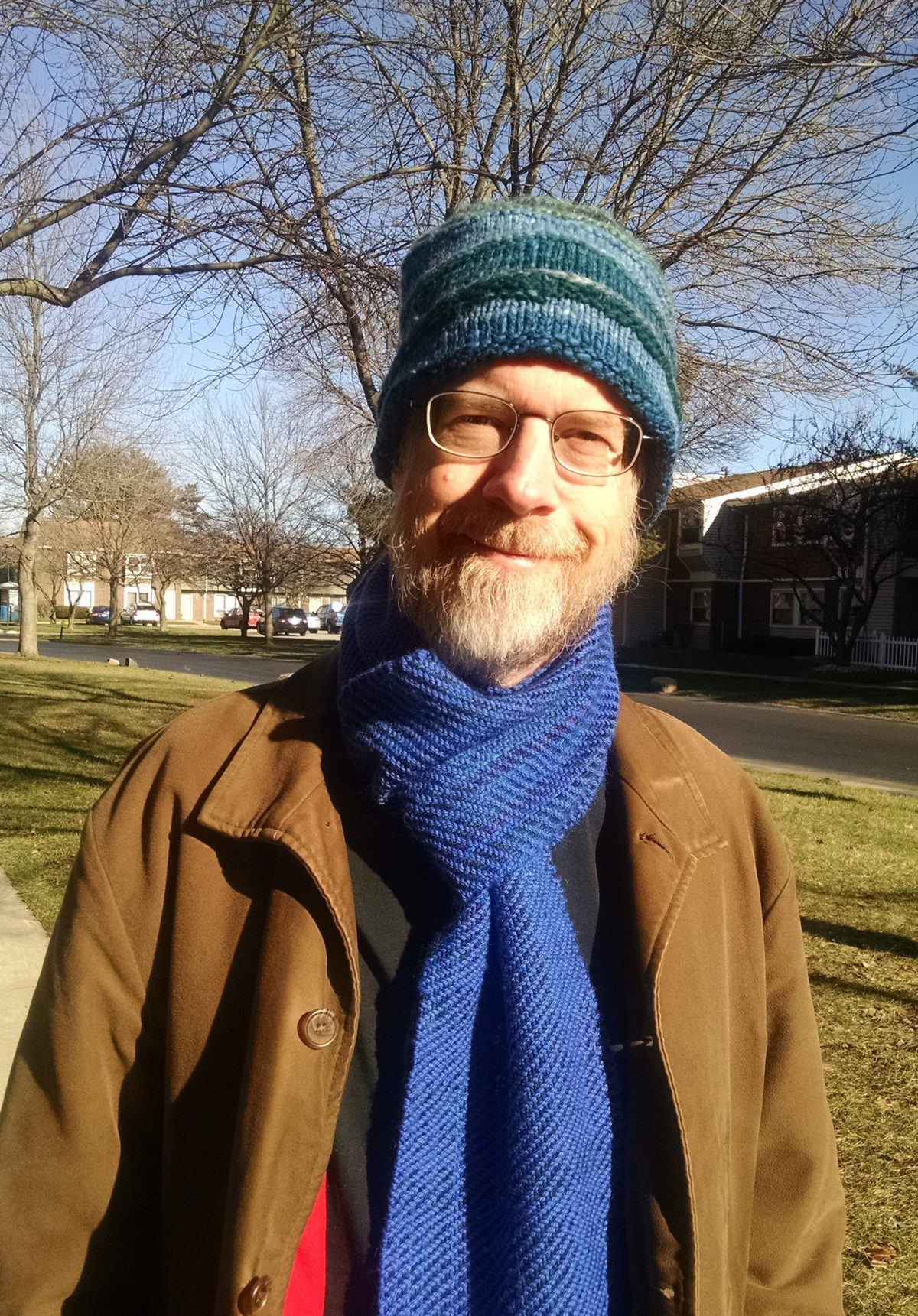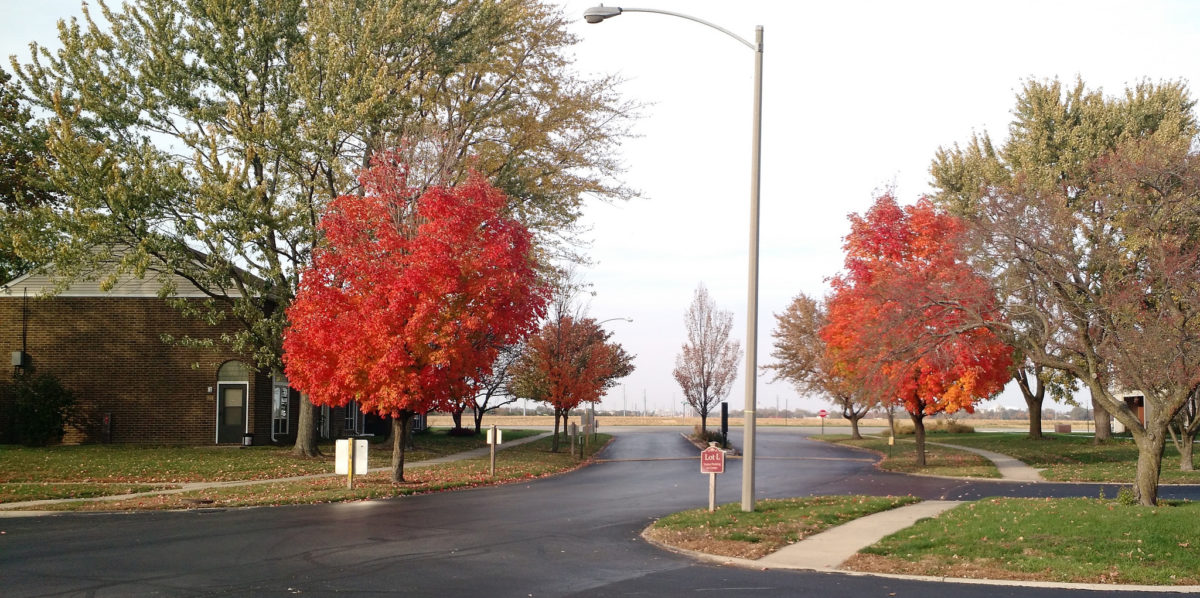For years I had trouble running into the winter. I eventually figured out that I’d simply had the wrong idea about how to do it. I’d imagined that if I just continued running through the fall, I’d gradually ease myself into winter running. That never worked—because there are plenty of warm days (or at least warm hours) through early fall, and then in middle or late fall there is (identifiable only in retrospect) a last warm day, and then it’s cold nearly every day until late March or early April. So even if I ran through fall, if I chose to get in my runs during the warm hours, I wouldn’t actually develop tolerance for the cold, the wardrobe for handling it, or the skill at picking the right garments.
A couple of years ago I failed to run through the fall, and then decided to develop a winter running habit anyway. I bought a few pieces of cold-weather gear—plenty, because I was generally only running once or twice a week.
I started with the sweats I wear to teach taiji, and then I added two pairs of tights—one sort of classic running tights, and then another pair of fleece tights, that ought to be good down to colder than I’m every likely to try to run in.
For tops I generally wore a regular sweatshirt over a regular cotton t-shirt. Then I got some short- and long- sleeved merino t-shirts, which are vastly better as a base layer. I also dug out a capilene half-zip top that my dad gave me a few years ago, which was just the thing when it got a little colder.
I also got a washable merino knit hat in high-viz yellow, and two different pairs of gloves in high-viz yellow—first a pair from the dollar store, which were not nearly warm enough, then a pair from Amazon that I think was marketed to people directing traffic, that were dramatically more high-viz, but still not quite warm enough.
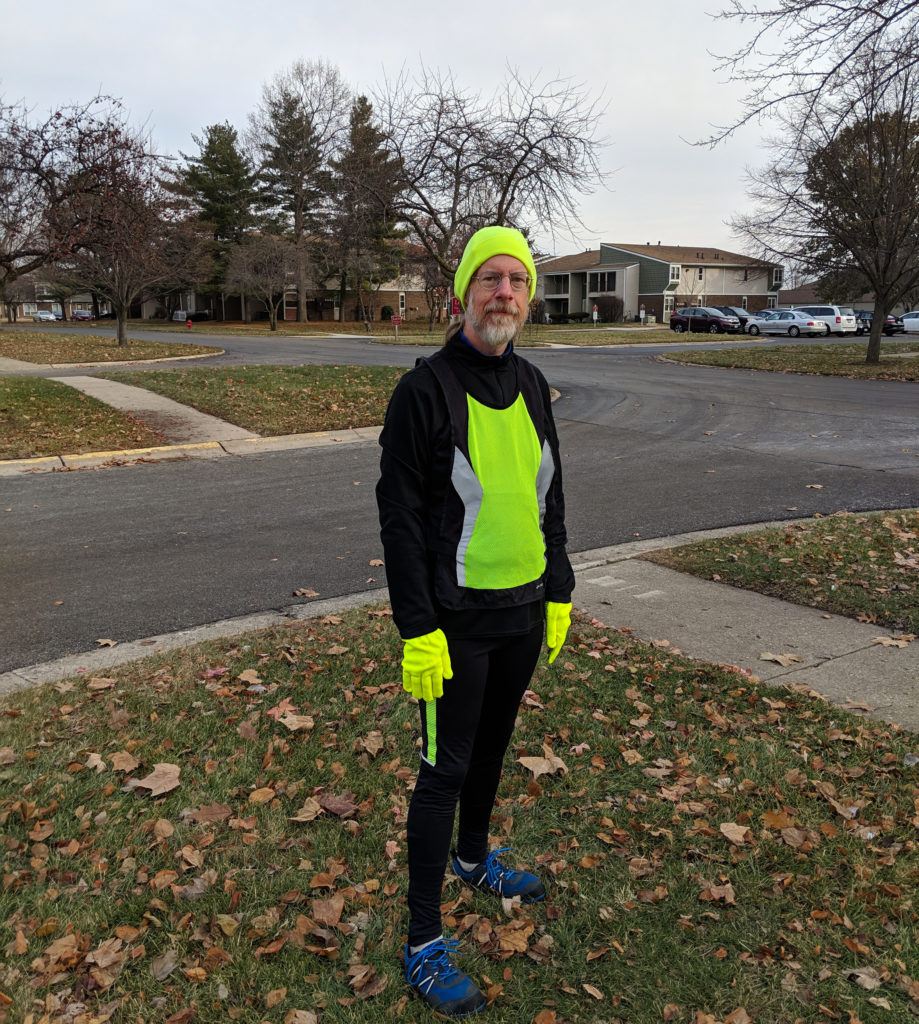
Now that I’m in my third year of winter running—and now that I’m running more times per week—I’ve added a few more pieces of winter running garb.
I bought a third pair of high-viz gloves, these from Illinois Glove company, which are finally warm enough, and almost as high-viz as the previous pair.
Last winter I picked up a pair of Janji Mercury Track Pants, which are wonderful. Size medium fits me perfectly, they’re warm enough down to well below freezing (and I rarely run when it’s below freezing, because of slipping hazards). I liked them so much I picked up a second pair last year, and just now got a third pair (because a couple of weeks ago I wanted to go for a run and both of the first two were already in the laundry).
Last year I added another quarter-zip pullover in some high-tech fabric that I picked up cheap at Amazon, and just now today another fancy Patagonia capilene base-layer top that I can wear either by itself, over one of my merino T-shirts, or under a wind-proof or water-proof layer.
I’ve gone running five or six times in the last couple of weeks, at temperatures ranging from right at freezing up to maybe 50℉, and so far I’ve managed to nail it each time as far as matching the warmth of the clothing to the conditions outside.
I have one more piece of running gear that I’ve ordered, but that hasn’t arrived: a headlight. Normally I just don’t run when it’s dark. (Since I don’t work a regular job, I have the freedom to choose to run only during daylight.) But a couple of times in the last few weeks, I wanted to go for a run that would start in the daylight, but might not finish until after dark. I figured that a headlight might be very useful as a just-in-case piece of safety equipment, even if I didn’t plan on doing much nighttime running. I ordered this Spriak Wide-Beam headlight, which seems like it would serve my purpose as emergency safety gear. If I end up running in the dark on purpose, rather than by accident, I’ll be tempted to step up to this Petzl Headlamp that offers 3x to 15x the battery life, and what looks like a rather better system for fitting the whole thing on your head, but costs 10 times as much ($200 vs. $20).
(FYI: Those Amazon links are affiliate links. The non-Amazon links are not.)
If circumstances develop in any sort of interesting direction—if it turns out that the gear I’ve got doesn’t cut it for this or that sort of conditions, or if I decide that I need some other bit of fancy running kit, or if one of the things I’ve got turns out to be even more suitable than I’ve already described, I’ll go ahead to write another post.
If you’ve got great winter running gear, I’d be very interested to hear about it! Comment below or reach out on social media or by email (see my contact page for ways to connect to me).

